Photo

Bowl, James Prestini, 1933, Art Institute of Chicago: American Art
Gift of James Prestini
Size: 7 × 4.8 × 16.2 cm (2 3/4 × 1 7/8 × 6 3/8 in.)
Medium: Mexican Mahogany
https://www.artic.edu/artworks/33009/
13 notes
·
View notes
Photo
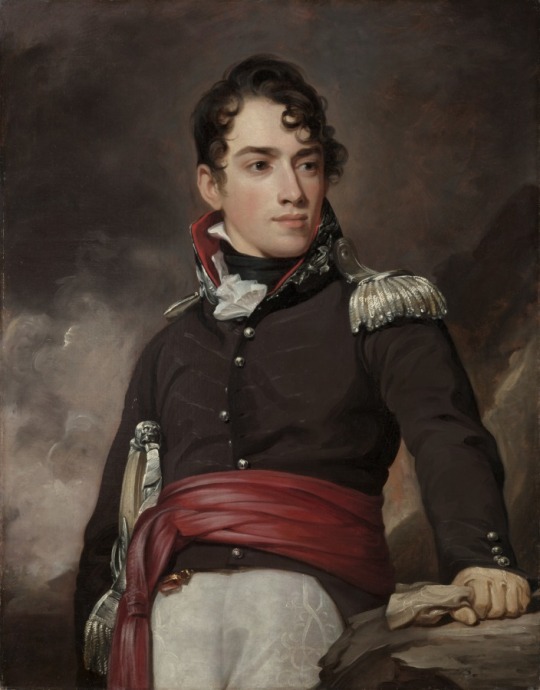
Portraits of Jean Terford David and Mary Sicard David, Thomas Sully , 1813, Cleveland Museum of Art: American Painting and Sculpture
According to his own inventory, the astonishingly productive Sully painted more than 2,600 works during his career. Most of these paintings were commissioned portraits, including this one of John Terford David, who had just recently married. French-born David was an American officer who served as a paymaster during the War of 1812. His rank is indicated by the fringed epaulet on his left shoulder and the lack of one on his right. In composing the portrait, Sully ingeniously positioned David’s body on an angle to emphasize the single epaulet and downplay the uniform’s lack of symmetry.
Leaving England for America at the age of nine but returning in his mid-twenties to study with Benjamin West, Sully finally settled in Philadelphia in 1810. There he became the city’s leading painter, known for dashing brushwork and elegant figures. Lieutenant Jean Terford David (1792–1838) commissioned these portraits of himself and his wife Mary Sicard David (1792–1864) soon after his appointment as regimental paymaster in the US Army. Sully created visual drama by portraying David from below against a cloud-filled sky. Mrs. David, however, is seen from straight on and presents a sweet and benign figure. The frame is original.
Size: Framed: 122 x 103 x 10 cm (48 1/16 x 40 9/16 x 3 15/16 in.); Unframed: 89.5 x 70.5 cm (35 ¼ x 27 ¾ in.); Part 2: 121.9 x 103.5 x 15.3 cm (48 x 40 ¾ x 6 in.); Part 3: 89.5 x 69.8 cm (35 ¼ x 27 ½ in.)
Medium: oil on canvas
https://clevelandart.org/art/1916.1979
20 notes
·
View notes
Photo

Drapery Tieback, 1810–60, American Decorative Arts
Gift of Harvey Smith, 1983
Size: Diam. 4 ¾ in. (12.1 cm)
Medium: Opalescent glass
https://www.metmuseum.org/art/collection/search/14249
87 notes
·
View notes
Photo
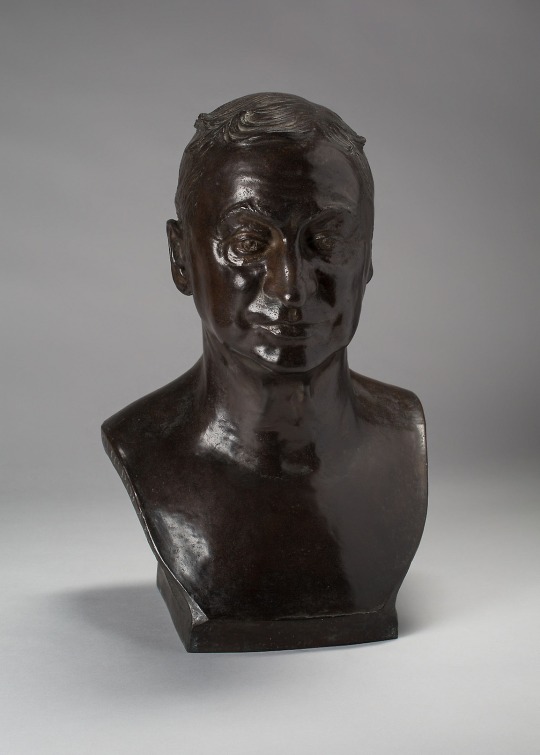
Charles Lawrence Hutchinson, Albin Polasek, 1920, Art Institute of Chicago: American Art
Gift of the artist
Size: H.: 48.9 cm (18 1/2 in.)
Medium: Bronze
https://www.artic.edu/artworks/80517/
4 notes
·
View notes
Photo

J. Frank Currier (1843–1909), Frank Duveneck, 1876, Art Institute of Chicago: American Art
Friends of American Art Collection
Size: 62.9 × 53 cm (24 3/4 × 20 7/8 in.)
Medium: Oil on canvas
https://www.artic.edu/artworks/72951/
6 notes
·
View notes
Photo

Small Triton Fountain, Carl Milles, 1916, Art Institute of Chicago: American Art
Gift of Mrs. Duncan Hodges and Mr. Edward L. Brewster in memory of Walter S. Brewster
Size: 109.5 × 55.9 cm (43 1/8 × 22 in.)
Medium: Bronze
https://www.artic.edu/artworks/199118/
2 notes
·
View notes
Photo

Cornelius Allerton, Ammi Phillips, 1821, Art Institute of Chicago: American Art
As the wealth and population of western New England increased, individuals wished to record their success by preserving their own or their family members' likenesses for posterity. With this increased demand, talented sign painters such as Ammi Phillips saw new opportunities. Phillips taught himself to be a limner—a painter of portraits. By 1811 he had learned painting techniques from other Connecticut limners, who executed full-length, three-quarter, and bust portraits on canvas, wood, and glass. Phillips began to use conventional poses adopted from European prints and became one of the most successful portraitists of the middle and upper classes in rural New England, plying his trade in Connecticut, Massachusetts, and New York. Here Phillips depicted Dr. Cornelius Allerton seated in a painted chair against a somber, gray background. Although the sitter's face is relatively unmodeled, the artist's careful rendering of detail captures a sense of his individuality. The inclusion of a volume of Parr's Medical Dictionary conveys Allerton's profession, while a tiny horse in the distance may suggest his financial status. Itinerant painters such as Phillips were often commissioned to portray several members of a family; in this case, Phillips also completed portraits of Allerton's mother (1946.395) and mother-in-law (Connecticut Historical Society, Hartford). This painting was given to the Art Institute by Robert Allerton, the sitter's grandson and an important benefactor of the museum. Gift of Robert Allerton
Size: 83.8 × 69.9 cm (33 × 27 1/2 in.)
Medium: Oil on canvas
https://www.artic.edu/artworks/55706/
2 notes
·
View notes
Photo

Textile fragment, Unidentified, ca. 1825-1835, Smithsonian: American Art Museum
Size: A: 22 × 14 in. (55.9 × 35.6 cm) B: 23 × 21 in. (58.4 × 53.3 cm) C: 30 × 23 in. (76.2 × 58.4 cm)
Medium: English pillar print
http://americanart.si.edu/collections/search/artwork/?id=36893
81 notes
·
View notes
Photo

Tazza, Tiffany and Company, 1892, Art Institute of Chicago: American Art
Gift of Ernest Schuster
Size: 14.9 × 15.9 × 9.5 cm (5 7/8 × 6 1/4 × 3 3/4 in.)
Medium: Glass
https://www.artic.edu/artworks/36522/
17 notes
·
View notes
Photo

Adoration of the Magi, Giulio della Torre , c. 1500-1525, Cleveland Museum of Art: European Painting and Sculpture
Figures leading livestock descend the winding rocky landscape in the background while in the foreground, a crowd gathers before the Holy Family. The traveling figures compose the majority of this plaque, communicating the haste and urgency on their journey to see Christ. Above the Holy Family, a rustic hut creates a canopy. The Madonna and Child sit prominently at the right on a Renaissance bench, receiving the Three Kings. The first king kneels as the Christ Child bends to accept the gift. Joseph stands cross-armed behind the Madonna with two winged angels at his side. Behind him are the heads of an ox and an ass, traditional elements of nativity scenes. To the left three children play while a youth leans on a pagan altar. The torso of an ancient sculpture lies on the ground before it, demonstrating that Christ has come to replace the ancient gods. This low-relief plaque was once believed to have been destroyed in 1914 but is now thought to have been a part of the Count W. Pourtalès collection in St. Petersburg, Russia. Adoration of the Magi resembles a 1506 relief by Riccio made for the Easter Candle in the Basilica of St. Anthony in Padua.
Size: Overall: 23.5 x 31.9 cm (9 ¼ x 12 9/16 in.)
Medium: bronze
https://clevelandart.org/art/1954.601
32 notes
·
View notes
Photo

Standing Girl Holding Basket, Unknown artist, 1700, Art Institute of Chicago: Prints and Drawings
The Leonora Hall Gurley Memorial Collection
Size: 307 x 193 mm
Medium: Red chalk and black chalk, with touches of graphite, on tan laid paper
https://www.artic.edu/artworks/95801/
21 notes
·
View notes
Photo

Bowl, Clyde Burt, 1975, Art Institute of Chicago: American Art
Gift of Dorothy Rosenthal
Size: 8 × 16.5 cm (3 1/8 × 6 1/2 in.)
Medium: Stoneware
https://www.artic.edu/artworks/120141/
2 notes
·
View notes
Photo
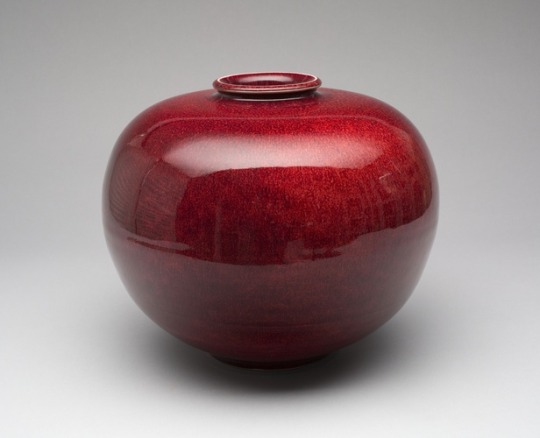
Globular Vase, Brother Thomas Bezanson, 1980, Art Institute of Chicago: American Art
Gift of Michael and Gigi Pucker in memory of Pema Khando
Size: H.: 26 cm (10 1/4 in.)
Medium: Porcelain, with copper red glaze
https://www.artic.edu/artworks/117574/
41 notes
·
View notes
Photo

Quadrangles in Two Planes, Irene Rice Pereira, 1945, Art Institute of Chicago: American Art
Gift of Society for Contemporary American Art
Size: 74.9 × 48.3 cm (29 1/2 × 19 in.)
Medium: Oil on glass and board
https://www.artic.edu/artworks/60623/
10 notes
·
View notes
Photo
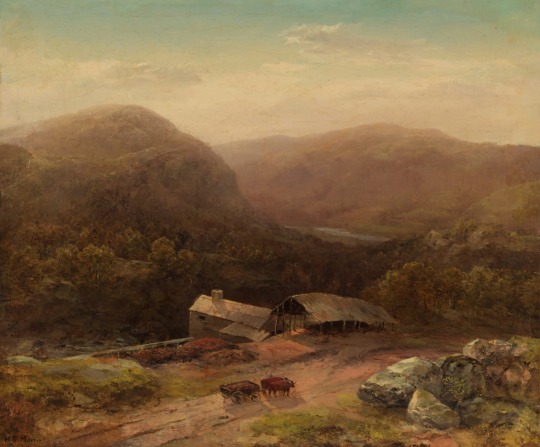
In the Housatonic Valley, Homer Dodge Martin , late 1850s, Cleveland Museum of Art: American Painting and Sculpture
Size: Unframed: 50.8 x 61 cm (20 x 24 in.)
Medium: oil on canvas
https://clevelandart.org/art/1927.392
76 notes
·
View notes
Photo

A Spanish Madonna, John Singer Sargent, c.1895, Saint Louis Art Museum: American Art
https://www.slam.org/collection/objects/51034/
15 notes
·
View notes
Photo
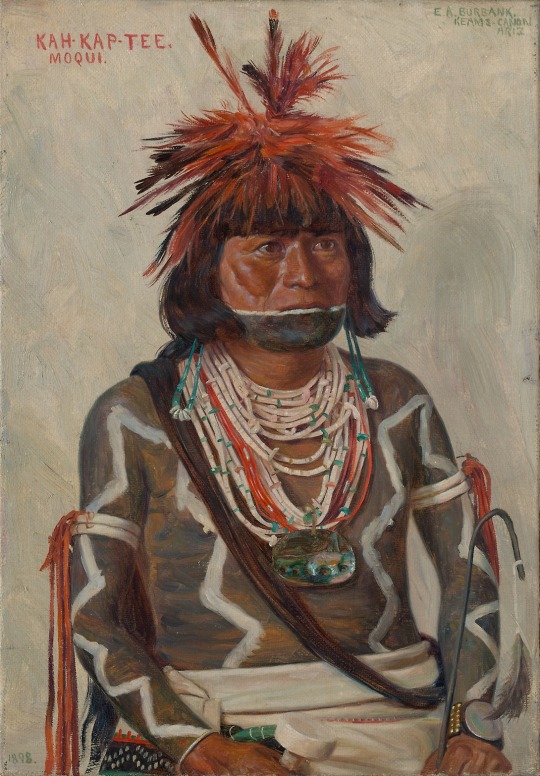
Kah-Kap-Tee, Elbridge Ayer Burbank, 1898, Art Institute of Chicago: American Art
In 1897 the Chicago artist Elbridge Ayer Burbank traveled west on behalf of his uncle, the philanthropist Edward E. Ayer, to paint a portrait of the famed Apache chief Geronimo, who was then living in captivity at Fort Sill in the Oklahoma territory. During his subsequent travels throughout the West, Burbank depicted individuals from numerous Native American tribes in ethnographic portraits, nevertheless focusing a sensitive artistic eye on his sitters. Like Hermon Atkins MacNeil before him, Burbank witnessed the Hopi Snake Dance in Arizona and followed the dance’s nine-day progress, ultimately producing more than 19 paintings of the participants. The Art Institute owns eight of these portraits. Each element of paint and dress carries a specific meaning in Burbank’s portraits. In his depictions of the Hopi priests Ko-Pe-Ley and Ho-Mo-Vi, for example, the black paint on the upper parts of their faces represents heavy rain clouds, and the white around their mouths stands for purity and faith. Eagle feathers, used in the ceremony to soothe the snakes, adorn their hair. Thus costumed, the priests would have removed the snakes from a special bag and placed the reptiles crosswise in their mouths. Despite his slightly loose brushwork, Burbank carefully depicted the priests’ ceremonial garb, giving his images anthropological authenticity as well as aesthetic power. He inscribed each portrait with the sitter's name and tribal affiliation, using "Moqui," an obsolete term for the Hopi people that is now considered offensive. Restricted gift of Mrs. Herbert A. Vance in honor of James N. Wood
Size: 33 × 22.9 cm (13 × 9 in.)
Medium: Oil on canvas
https://www.artic.edu/artworks/182388/
5 notes
·
View notes